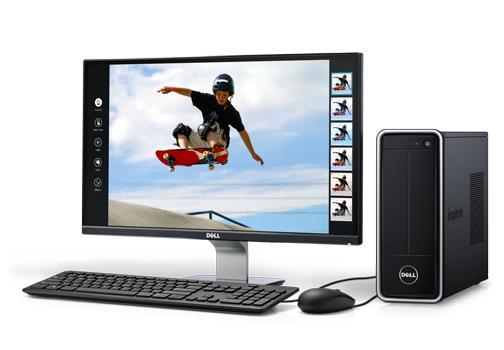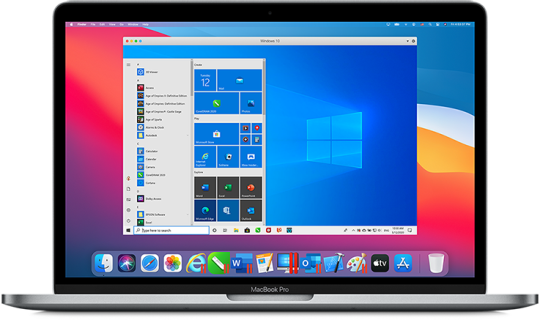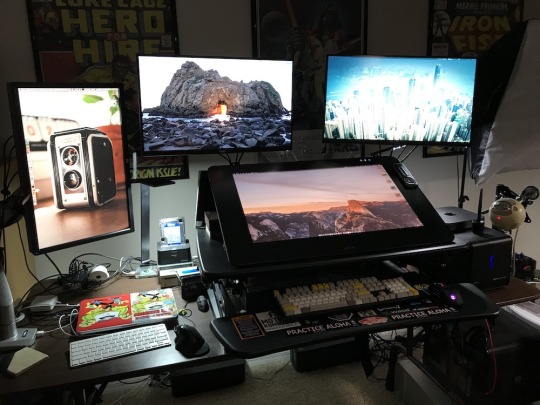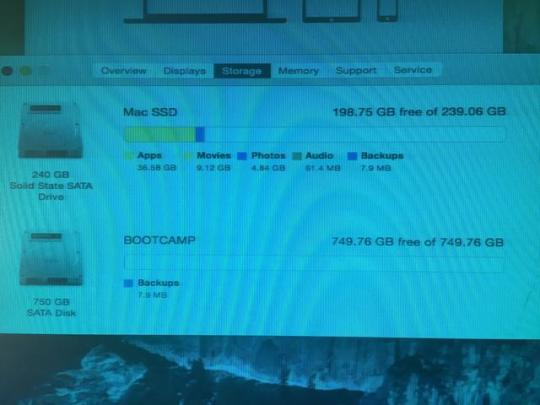#this is all using ifixit pricing (and amazon for the shell)
Explore tagged Tumblr posts
Text
huh apparently it's not too difficult to replace the rail sensors if you have the right tools
#it would cost like $70 altogether for the 2 rail sensors the new shell and a repair tool kit#which is cheaper than a used switch and lets me keep my modding capabilities :)#i'd feel weird asking for financial help with this so close to the holidays#maybe if i get some cash for xmas i'll do some investments#I ALSO. need to look into a joystick replacement for one of my controllers#it was one of the pastel set and the joystick just snapped off#i wasnt sure i could send it in for repairs cuz a) i dont think i bought insurance#and b) i think it was my own error (leaving it on the floor)#oh that would be $20 for the part and some tools#which ordering that instead of the full toolkit would make everythiiing...#$75#which ends up being better than buying to full kit and just the replacement joystick#this is all using ifixit pricing (and amazon for the shell)
1 note
·
View note
Text
Gravastar Mars Is a Portable Speaker From Our Apocalyptic Future
Gravastar Mars Damaged Yellow Edition
8.00 / 10
Read Reviews
Read More Reviews
Read More Reviews
Read More Reviews
Read More Reviews
Read More Reviews
Read More Reviews
Read More Reviews
Read More Reviews
Read More Reviews
Read More Reviews
Read More Reviews
Read More Reviews












Shop Now
The Gravastar Mars is unique, beautiful, and sounds rather good too. It's the perfect little buddy to usher in the apocalypse with you. At $300 for the Damaged Yellow edition, it certainly isn't cheap. But nice things generally aren't.
Specifications
Brand: Gravastar / Zoeao
Connectivity: Bluetooth 5.0, 3.5mm AUX
Battery: ~20 hours, charged by USB-C
Water Resistance: None
Pros
I mean... just look at it! It's gorgeous.
Cons
Audio is a little mid and top heavy
Pricey
Volume control is too sensitive
Buy This Product

Gravastar Mars Damaged Yellow Edition other
Shop
// Bottom var galleryThumbs1 = new Swiper('.gallery-thumbs-1', { spaceBetween: 10, slidesPerView: 10, freeMode: true, watchSlidesVisibility: true, watchSlidesProgress: true, centerInsufficientSlides: true, allowTouchMove: false, preventClicks: false, breakpoints: { 1024: { slidesPerView: 6, } }, }); // Top var galleryTop1 = new Swiper('.gallery-top-1', { spaceBetween: 10, allowTouchMove: false, loop: true, preventClicks: false, breakpoints: { 1024: { allowTouchMove: true, } }, navigation: { nextEl: '.swiper-button-next', prevEl: '.swiper-button-prev', }, thumbs: { swiper: galleryThumbs1 } });
The Gravastar Mars is both an eye-catching work of art and a great portable or desktop speaker. Taking the form of a scuttling drone from the far-flung war-torn future apocalypse (so... probably next year at this rate), the spherical-shaped Mars with three extendable legs features attractive lighting focussed around the eyeball in the center.
Today we're taking a look at the War Damaged Yellow edition, which is hand-painted with blue lighting and retails at $300.
youtube
Also available is a Damaged Red edition (with yellow lighting), as well undamaged editions in "space gray" with green lighting, or "sci-fi blue" with blue lighting. The undamaged models are $100 cheaper at $200, which is still a fair chunk of change for a portable Bluetooth speaker.
Gravastar Mars Design
Looking like something that escaped from the Aperture Laboratories (in fact, Gravastar did have a white edition at one point, though it's either out of stock or withdrawn from sale), the Gravastar Mars weighs a hefty 3.5lbs (1.6kg), and stands a full 7.5 inches. It's quite a beast to behold. In a cute sort of way.
The case is predominantly a strong zinc alloy on the top and underside, though the mid-section appears to be plastic.

The LED lighting is focused on the front, but you'll also find smaller accent lighting on the side grills, and the legs, which can fold for storage.

On the underside, you'll find the USB-C charging port, and 3.5mm Aux input. I found myself wanting to apologize to the lil guy for exposing his sensitive belly like this.

A fabric-covered charging cable is included in the box, as well as a stereo cable. The charging cable is right-angled on one end, so it can be fitted to charge the unit without needing to leave him rolled over in a most undignified manner.

You can also purchase an optional charging base for $60, though we didn't receive one for testing.
Around the rear is a separate bass driver (no special lighting around that), and above that sit three buttons for controlling the device. These consist of main power, LED, and Bluetooth buttons.
Long pressing on the power button plays a neat deactivation or power-on sequence, while the LED button can be used to turn on or off the integrated lighting if you want.

The Bluetooth functions much as expected, with a long press of the button to enter pairing mode. The device utilizes Bluetooth 5.0 for latency-free audio, and I was more than happy streaming YouTube to it without experiencing the timing mismatch that sometimes occurred on older wireless speakers. But if you did have problems, there's always the aux input underneath.
On the very top of the main body there's a touch-sensitive volume slider with more blue LEDs to indicate the current volume level.

While visually impressive, you do need to be careful. Just picking the Mars up or brushing your hand across the top can result in an auditory bomb as the volume goes from o to 100 in no time at all. Perhaps two touch-sensitive buttons to increase the volume in discrete stages would have been less dangerous to my ears. I may sound old, but this thing can get ridiculously loud.
In terms of functionality, there's nothing else to be found here. There's no robotic voice assistant integration. It doesn't have an actual pew-pew laser. And the legs are purely there for stability—you can't remote control it.

As a single speaker, both channels are mixed together for mono output. But if your pockets are deep enough, you can hook up two for stereo sound.
Audio Quality
As a $300 speaker (admittedly, the "undamaged" editions are $200, so a fair chunk of this cost goes on the hand-painted finishing process), I expect the Gravastar Mars to sound as good as it looks. Thankfully it lived up to my expectations.
I ran through a selection of audio tests from AudioCheck.net, and couldn't identify any glaring issues. I will note that on the bass response test, I could only hear down to 40Hz, while 30Hz and 20Hz produced no audible bass, but did result in a small amount of distortion noise. I couldn't hear this during regular usage, however.

48dB below full-scale volume was about the limit of the dynamic range I could identify.
More importantly, I ran through a range of songs I'm familiar with, and they all sounded decent enough. You should however bear in mind that the laws of physics prevent something this small from producing floor-shaking bass. It's a good speaker for its size that punches well above its weight, but it's still a little top and mid-heavy for my tastes.
You aren't going to run a DJ set from this, but you might take it down the park for a post-apocalypse picnic.
Repairability
On a device of this size, it's nice to see exposed bolts and screws as such an integral part of the overall design aesthetic.
Though I haven't fully disassembled it, the upper zinc-alloy casing is for looks only and is secured by two hex bolts on the sides. Pulling this shell away reveals the main body of the device, in the same strong plastic as the middle section. A number of smaller hex bolts also secure the bass driver. You'll need a precision repair kit such as the iFixit Mahi to open this.
A set of small Phillips-head screws then secures the control circuitry to the main body, and I suspect the entire thing could be disassembled relatively easily to its component level.
iFixit doesn't have a repairability rating, but in my opinion the prospects are good. I'll update if I ever have the need to try.
Battery Life
The internal 10,000mAh battery provides a stated 20 hours playback. I streamed Spotify to it for around four hours a day at medium volume, with the lighting on, and it lasted into the fifth day, so this seems accurate enough. A full charge takes around four hours.

It's not the best in class battery life by any means, but then again, I don't think the battery matters too much in this type of product. It's an objet d'art for your desktop; not your one and only block-party speaker. Chances are you won't be far from a charger.
Best Collapse Buddy
The Gravastar Mars is beautifully designed, sounds good, and is truly unique. Yes, it's expensive, but well-made and unique things tend to be. If you want something a little different on your desktop or are looking for the perfect gift for gaming obsessed teenager, the Gravastar Mars would be well received.

If you just want some generic rectangular-shaped black plastic tat to take to the beach, then I'm sure Amazon can cater to your whims with 6,000 identical product listings at bargain prices.
The Gravastar Mars is the perfect little buddy to rock out with as modern society crumbles around us. I just wish he was a little more talkative and would stop staring at me so intently with his ominous blue eye.
Gravastar Mars Is a Portable Speaker From Our Apocalyptic Future published first on http://droneseco.tumblr.com/
0 notes
Text
Mac Mini For Photoshop

The entry-level Mac mini offers a 3.6GHz quad-core i3 processor for £799/$799 which may not fulfil the needs of the typical designer, but the £1,099/$1,099 version offers a 3.0GHz 6-core i5. Apple FINALLY updated their Mac Mini product line late in 2018 (with a minor update in March 2020), making it a pretty good option for photographers to run Lightroom and Photoshop. This buying guide provides insight into which model and what configuration options photographers should consider. The best budget Mac for photo editing is the 2019 Mac Mini for about $900 and the best budget PC is the Dell Inspiron 3670 for about $650. Add the ViewSonic VA2719-2K-SMHD 27 Inch display for about $220 and a 4TB hard drive for another $100. So you are a photographer on a tight budget in need of a computer to run Lightroom and Photoshop. Hi John - The PA272W-BK-SV 27' 16:9 IPS Monitor with SpectraViewII from NEC comes equipped with the NEC SpectraViewII color calibration tool and features enhanced color accuracy covering 99.3% of the Adobe RGB color space, 94.8% of the NTSC color space, and 146.4% of the sRGB color space. With a variety of input connectors including DisplayPort, Mini DisplayPort, HDMI, and DVI-D Dual-Link, you.
Mac Mini For Photoshop Cs6
Mac Mini For Photoshop Software
What is Final Cut Pro X like running on a new Mac mini? We take a look at the new model, its features and how well FCPX performs. It even beats an iMac Pro in one of our tests!
Before we plug the new Mac mini up, it is important to understand that this version of the unit has changed. Changed a lot.
Back in 2005, the Mac mini was designed for switchers from PCs. It didn’t come with a screen, keyboard or mouse and keeping the price down helped make the transition to Mac OS 10.3 Panther and a PowerPC processor as painless as possible.
Times and technology have changed, no need now for the DVD slot or a spinning hard disk for storage.
The switchers of today are buying MacBook Airs and MacBook Pros as their first Macs, not the mini.
So this gives Apple a chance to change and retarget the use of the Mac mini. Consequently, that’s exactly what they have done with the new range of models.
But instead of offering (To quote Steve Jobs) a ‘stripped down Mac’ they’ve actually put the logic board on steroids!

The fourth generation Mac mini now has a choice of quad and 6-core processors, up to 64GB of Ram, up to 2TB of SSD storage and the option of a 10GigE port over the standard GigE.
There are also four USB-C Thunderbolt 3 ports fed from two controllers, an HDMI port that supports 4K and two USB 3 ports. So yes, you can plug your own keyboard and mouse in without having to buy any adaptors.
Can the user upgrade the RAM in the new machine? Yes, it is possible, but it is not a case of flipping up a slot and exchanging the cards out.
You have to remove the cooling fan and then slide out the logic board. Make a mess of it and you’ll invalidate the warranty, so it is best to stick to an Apple approved centre for the upgrade. Should you want to get your spudger out and see the insides of the new Mac mini, head over to the excellent iFixit site.
The machine on test is a 3.2GHz 6‑core 8th‑generation Intel Core i7, 32GB 2666MHz DDR4, Intel UHD Graphics 630, 1TB SSD storage and the 10 Gigabit Ethernet option.
If the colour of the Mac mini looks familiar, it is exactly the same as the iMac Pro and (after seeing them side by side) the Blackmagic external GPU. This also makes sense of the decision for Apple to sell the black keyboard and mouse and also probably hints at the new Mac Pro colour. (And possible footprint- a skyscraper sized oblong trashcan?)
Connecting it up
I’m lucky to have 2 10GigE connections on the back of my QNAP NAS. Final Cut Pro X needs fast drives to be able to build the ‘always live’ waveforms and thumbnails.
Plumbing the Mac mini into the edit system is easy and I’ve detailed how to do point to point 10Gig connection before if you haven't got a router/switch.
If you need the internet on the machine, a cheap USB to Ethernet adaptor from Amazon for $15 works as well as anything else. Run a speed test to make sure you are accessing the NAS via the higher speed route.
I powered a 4K monitor from the HDMI port; this works well and avoids any more dongles having to be bought.
After 25 years of Mac ownership, I have enough keyboards and a spare mouse to finish off the system!
Power On
The machine comes with Mojave installed and defaults to dark mode on the now silent boot. The machine is very quiet and can’t be heard over the fan of the nearby QNAP, which isn’t that loud either. This machine could easily sit on your desktop and not annoy you or your co-worker.
I read a recent review that the sound was pretty terrible out of the Mac mini. I’d disagree. It isn’t great, but it isn’t bad either. I’d say it was better than the old cylinder Mac Pro, but not in the league of the Mac notebooks. You wouldn’t want to use it as edit monitoring.
The Mac mini does have a headphone socket and I can see many editors sitting in offices with the machine on the desk and headphones on editing all day.
Although I worked the machine hard with rendering, the shell didn't get too hot. However I did feel the warm rush of air out of the back of the machine which caught me by surprise when the mini was angled away from me.
I wouldn't have it in this orientation for continuous use, ie situated under a central monitor post with cables pointing at you. Instead I suggest putting the cables and heat exhaust to the back. It will make plugging the headphones in a bit trickier, but I hate sitting in draught!
Final Cut Pro X Performance!
Let’s give it a real test and put it up against an iMac Pro!
I thought I’d dive straight in with a 4K Project and use a Library with a short minute and a half sequence with large still images, transitions, multiple title and adjustment layers.
It is in a Library that I duplicated to both machines with the media staying on the QNAP. The cache was set to both desktops respectively as the RAM in both runs at up to 3Gig speed.
Mac Mini For Photoshop Cs6


Although I didn’t time it, it felt like the thumbnails were taking a longer time to draw than I’m used to on the iMac Pro. All render files were deleted before all tests.
Unrendered, the Mac mini played the sequence back in Better Performance, but dropped frames on Better Quality. The iMac Pro played back in both settings without a problem.
Skimming seemed just as fast as the iMac Pro and it didn’t feel underpowered when navigating the timeline or browser.
The iMac is an 8 core machine with 64GB of RAM and more importantly a Radeon Pro Vega 64 GPU.
Both machines are connected to the same storage via 10GigE and renders and exports went to the respective desktops. (Ok I know it is NBase-T which supports 1Gb, 2.5Gb, 5Gb and 10Gb)

Render time Mac mini 7’03” iMac Pro 1’43���
Mac Mini For Photoshop Software
4K ProRes 422 Export Mac mini 6’45 iMac Pro 1’40”
As expected here as FCPX uses the GPU for image processing, the much lower powered Mac mini takes a lot longer.
Compressor Convert to HEVC 4K 8Bit Mac mini 54” iMac Pro 55”
Well, the Mac mini beat the iMac Pro! This is because all of the conversion is done on the CPUs.
Not really worth testing for Motion as apart from a few things like particles, Motion almost lives on the GPU.
Compressor Clusters
No, not a new breakfast cereal, but Compressor allows you to share the work out over connected machines.
I didn’t realise that the ability to set up a cluster of machines running Compressor was easy to do. Well, when I say easy my first attempt failed, but that might be down to my slightly quirky network topology with the QNAP.
To build a cluster, on the machines you want to add, open up a copy of Compressor. In the preferences, turn the option on for other computers to process batches.
Then on the host machine, make a cluster from the available machines in the list. Here you can see we have got something very wrong! We will be revisiting this topic with the issue fixed when we have more time.
Then having named your cluster (or other single machine), you can then toggle the processing destination in the dropdown menu on the bottom of the host machine's Compressor GUI.
To work properly and fast, all the machines need to be connected with 10GigE via a 10GigE switch. The costs of this networking is now a lot cheaper, Netgear and QNAP make a suitable budget switch.
There is no limit to the amount of Mac minis you can have in a cluster. You'll probably run out of switch ports first!
One note here. For distributed processing, it has to be a self contained movie that gets automatically diced and sliced and sent off to the cluster machines.
Conclusions
Not what I expected. I guess I was in the state of mind thinking that the Mac mini wasn’t a serious machine for anything other than web browsing, Plex serving or basic Photoshop.
It’s a lot more than than. It is a component in building a modular system, which is a new thought considering that Apple has been criticised over the past few years for lack of upgradability in the Mac Pro and iMac Pro.
There are two reasons for this new direction. The first are Thunderbolt 3 connections giving the option of using an external GPU and therefore factoring out the limited onboard Intel offering.
The second is the option of a 10GigE port. Being able to connect to high speed shared storage without going through an adaptor is a huge plus.
Why? Take sever centres for example. Every App on the iOS App Store has been compiled on a Mac. Rack up rows of Mac minis connected with 10GigE and you have a facility that can get apps ready quickly. No need for costly large GPUs here, all the work will be done by the CPU cores. Once set up, the Mac mini is more than happy to run in a headless mode. I've worked with a few producers like that.
This is also true of building a small Mac mini cluster to do the hard work of making all the different deliverables of an FCPX exported finished movie - while you carry on editing something else with your main machine. It would make sense for a large production or facility house to have a rack of these that everybody could access when needed.
Put five or ten of these together in a rack and you have a very fast DIT tool for making proxies and dailies on set. The Mac mini above gets its first on set DIT experience tomorrow!

I’ll leave you with a final thought.
Spec up a 6-core Mac mini with 32GB of RAM, 1TB of SSD storage and the soon to ship Blackmagic RX Vega 56 eGPU and you have a machine that’s not too far from the base model iMac Pro, wait for it... with over £1,200 left spare.
Granted, you’ll have to supply your own monitor, keyboard and mouse, but if upgradability is important to you, this could be a very clever way of getting the power with the flexibility.
Hopefully we will have an eGPU to test soon :)
Peter Wiggins is a broadcast freelance editor based in the UK although his work takes him around the world. An early adopter of FCP setting up pioneering broadcasts workflows, his weapon of choice is now Final Cut Pro X.
You can follow him on Twitter as @peterwiggins or as he runs the majority of this site, you can contact him here.

0 notes